Abstract
OBJECTIVE: To evaluate the effect of a community mobilization and youth development strategy to prevent drug abuse, violence, and risky sexual activity. DATA SOURCES/STUDY SETTING: Primary surveys of youth, parents, and key neighborhood leaders were carried out at baseline (1994) and at the end of the intervention period (1997). The study took place in four intervention and six control neighborhoods in Seattle. STUDY DESIGN: The study was designed as a randomized controlled trial with neighborhood as the unit of randomization. The intervention consisted of a paid community organizer in each neighborhood who recruited a group of residents to serve as a community action board. Key variables included perceptions of neighborhood mobilization by youth, parents, and key neighborhood leaders. DATA COLLECTION/EXTRACTION METHODS: Youth surveys were self-administered during school hours. Parent and neighborhood leader surveys were conducted over the phone by trained interviewers. PRINCIPAL FINDINGS: Survey results showed that mobilization increased to the same degree in both intervention and control neighborhoods with no evidence of an overall intervention effect. There did appear to be a relative increase in mobilization in the neighborhood with the highest level of intervention activity. CONCLUSION: This randomized study failed to demonstrate a measurable effect for a community mobilization intervention. It is uncertain whether the negative finding was because of a lack of strength of the interventions or problems detecting intervention effects using individual-level closed-end surveys.
Full text
PDF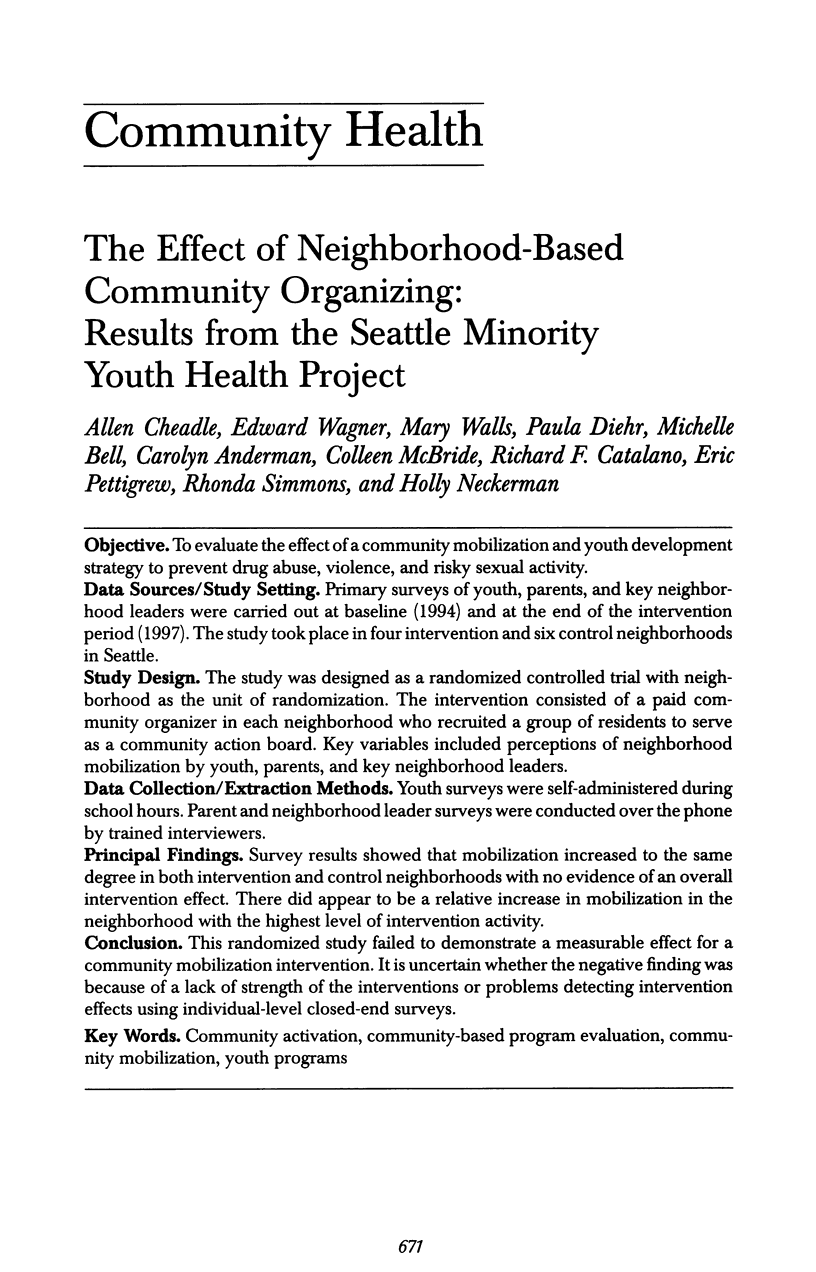
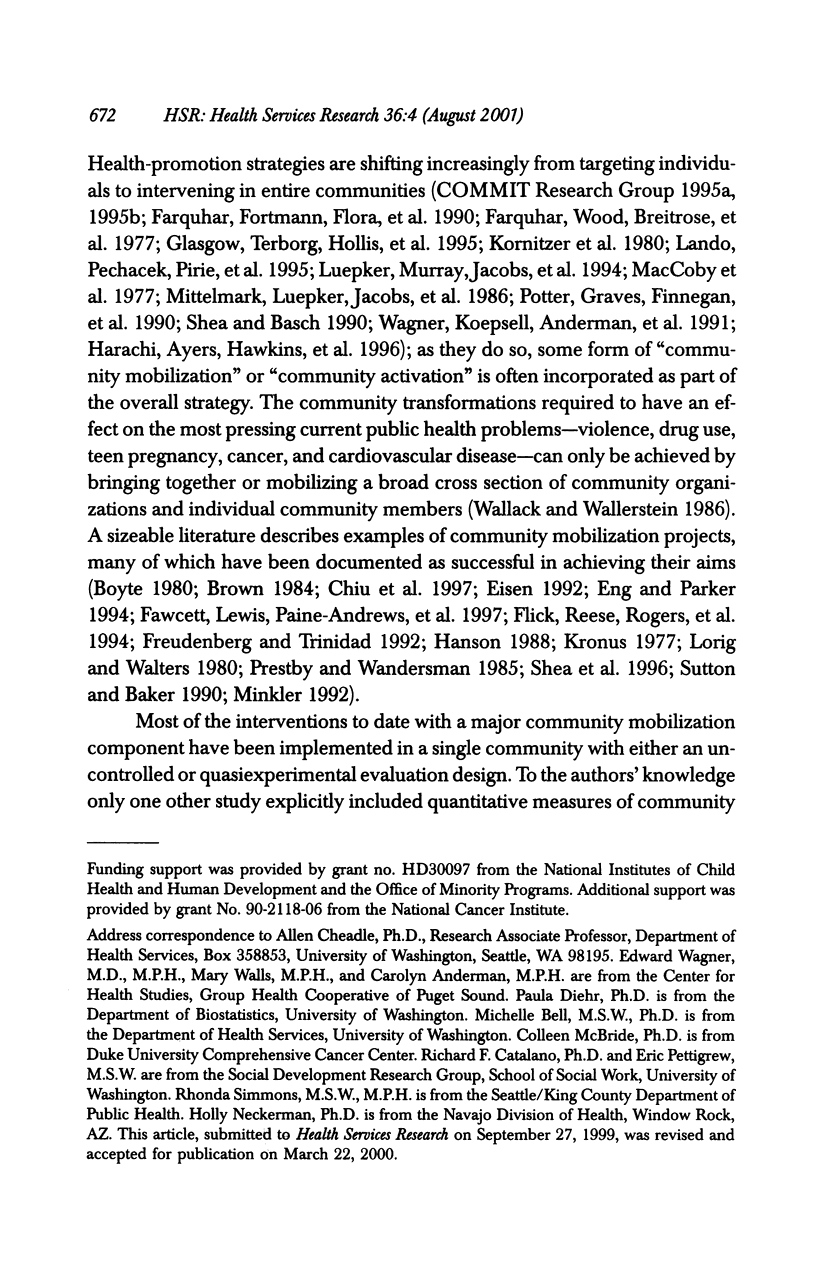
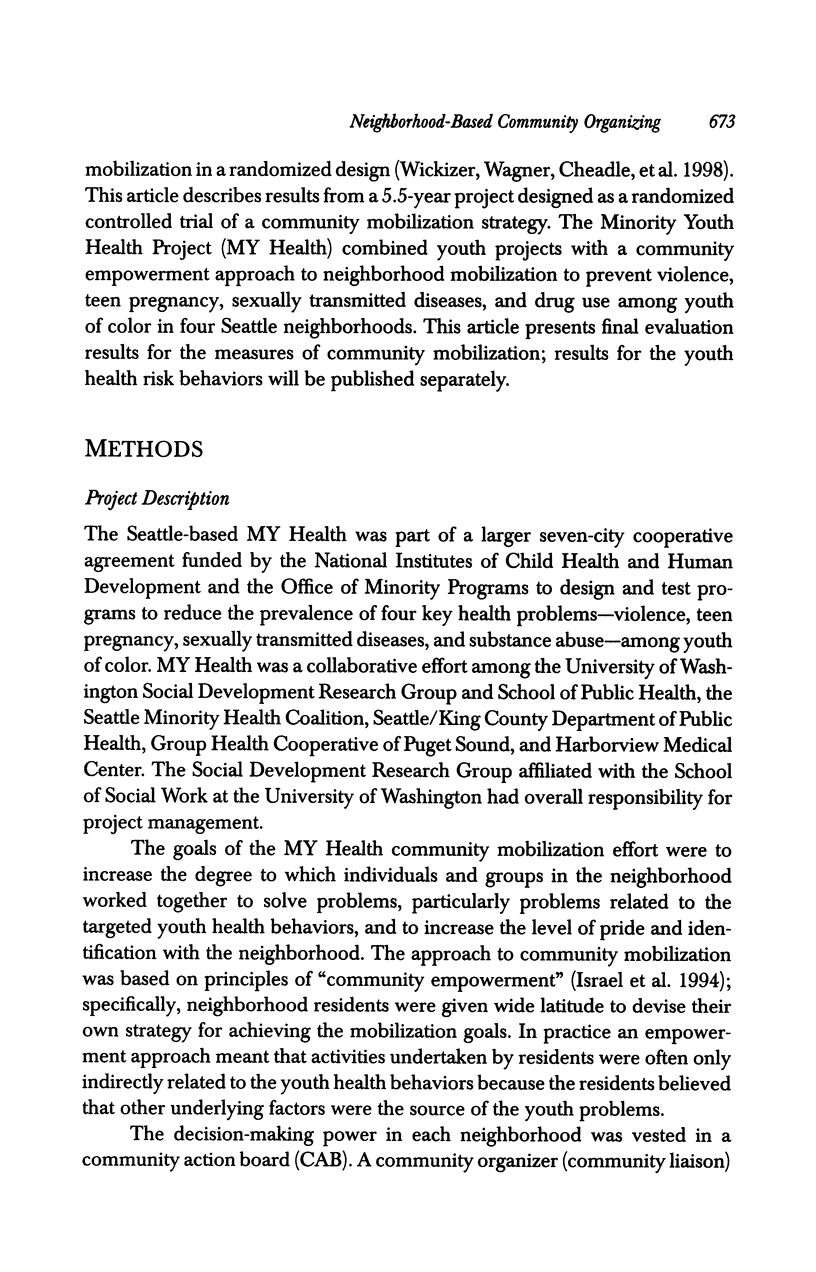
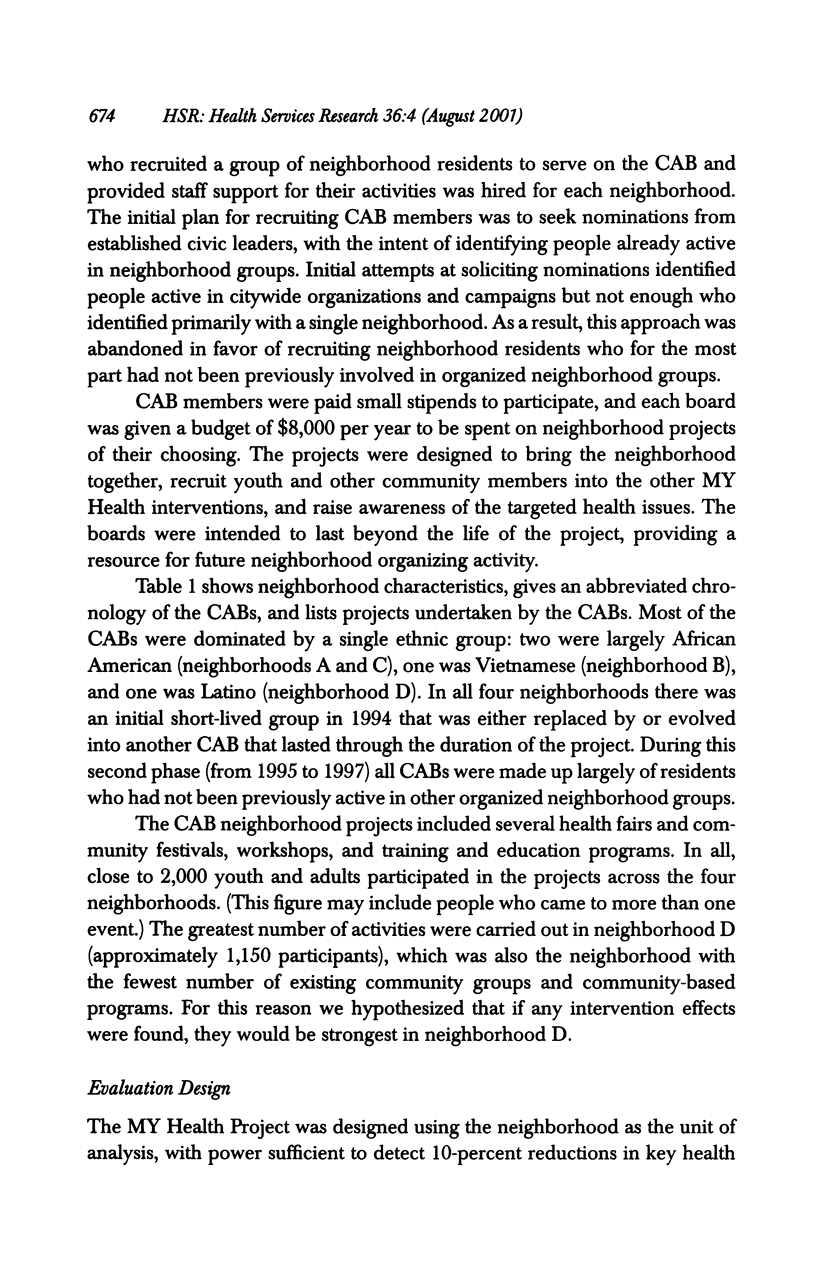

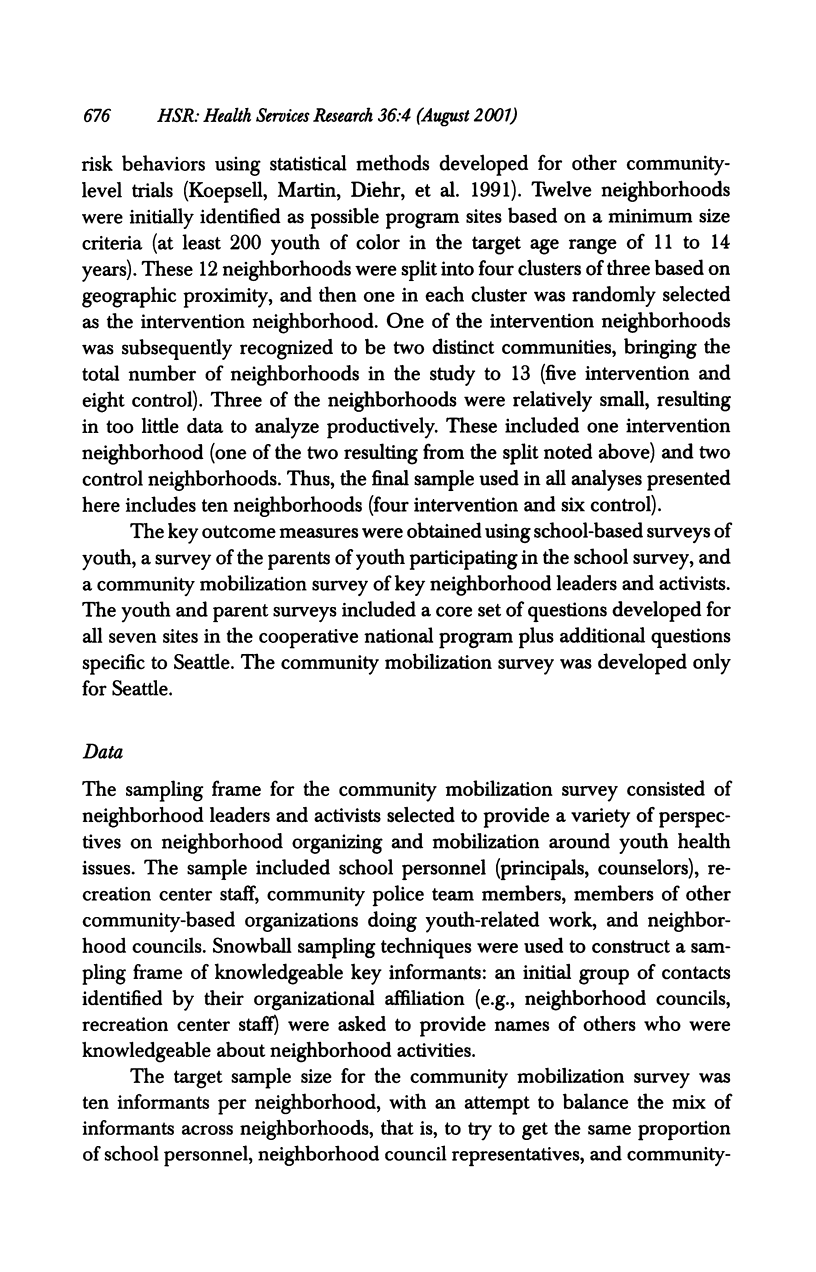
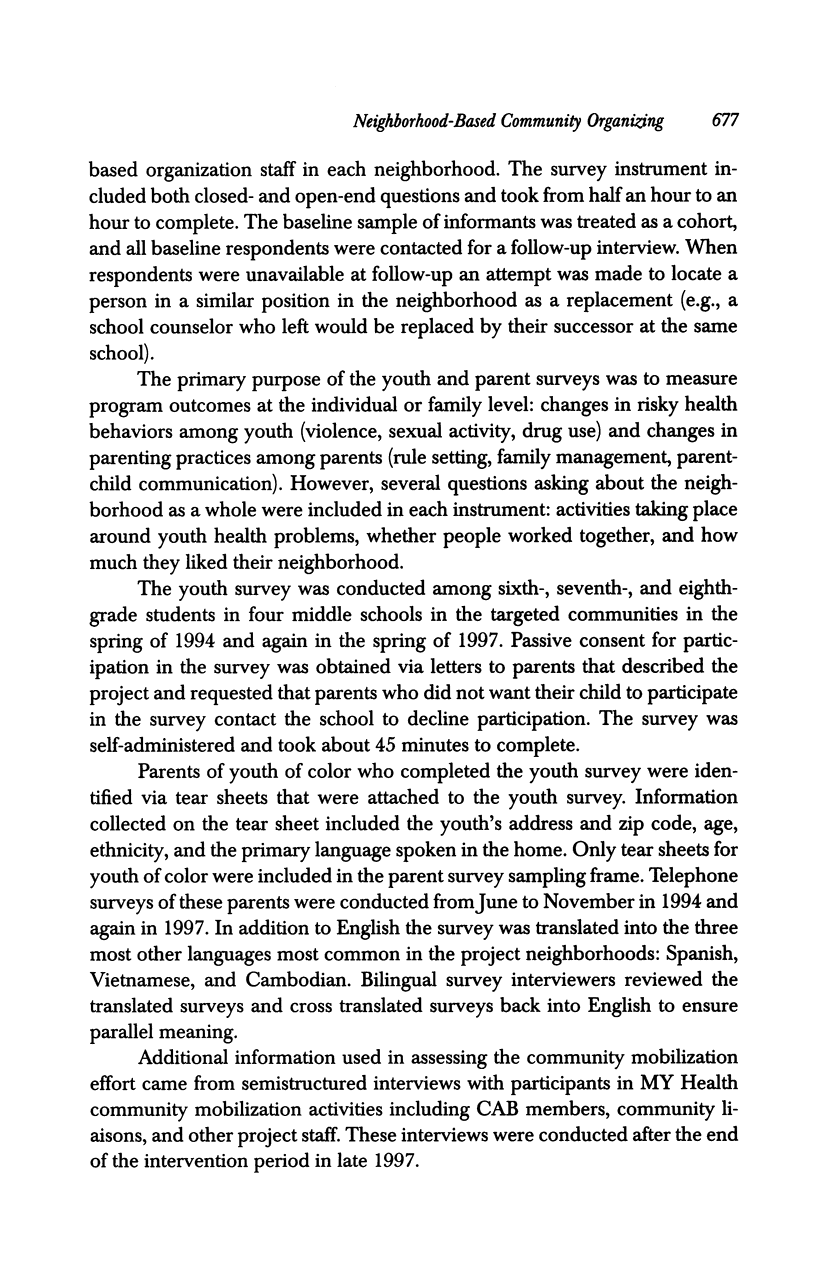
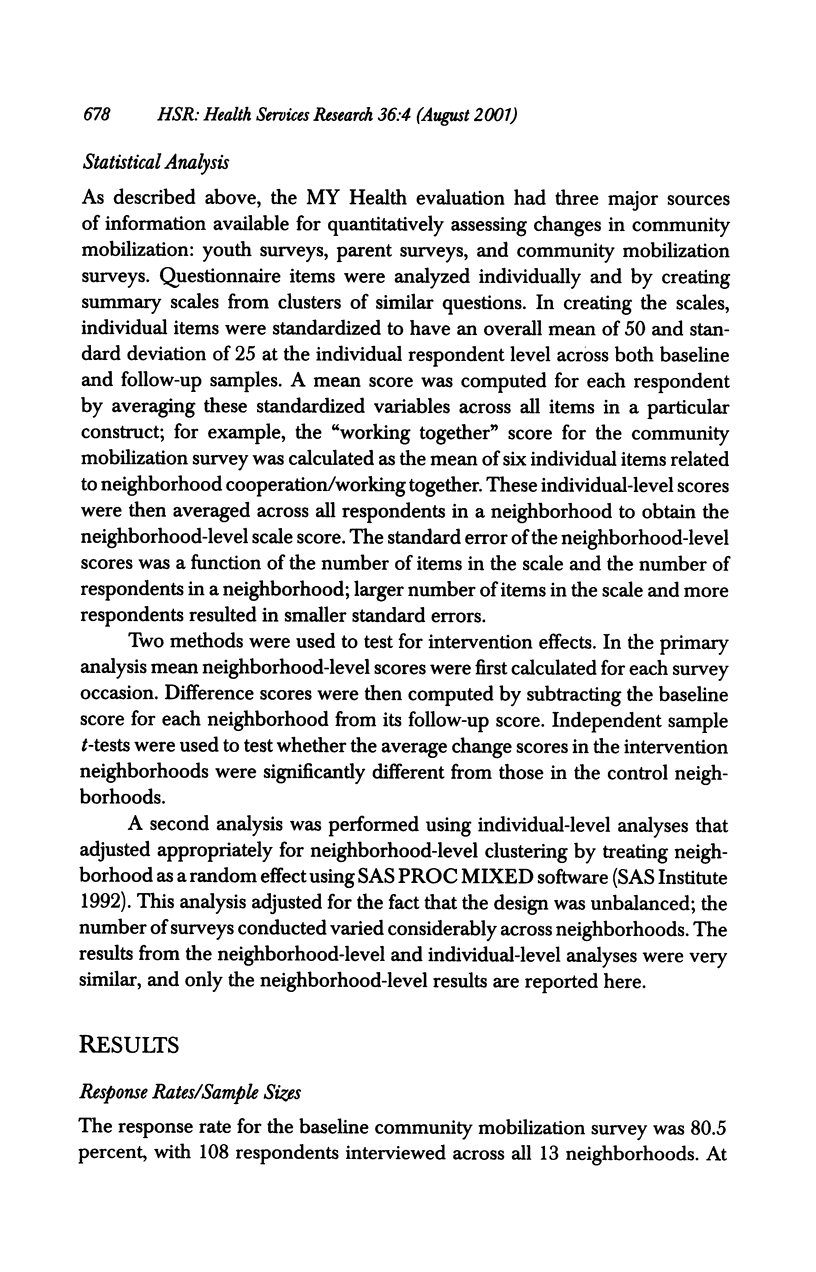
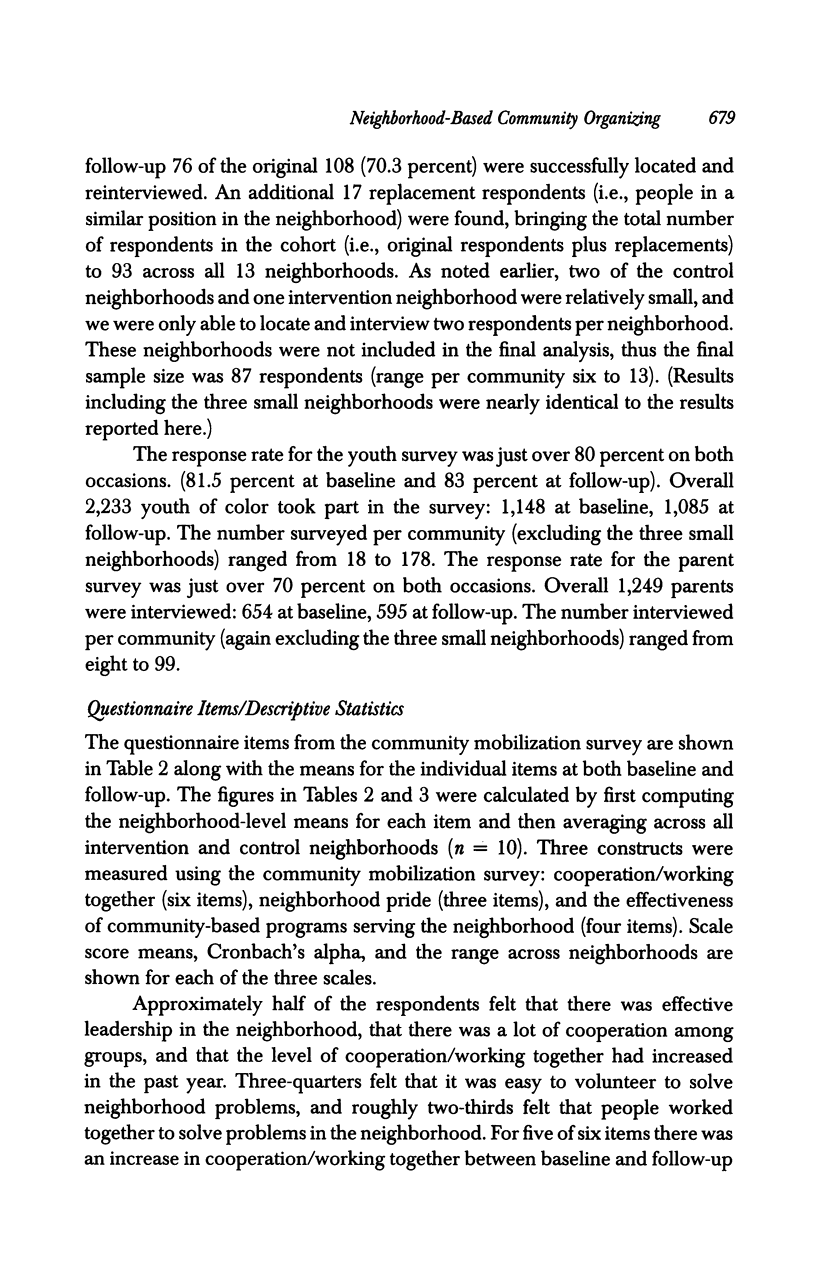
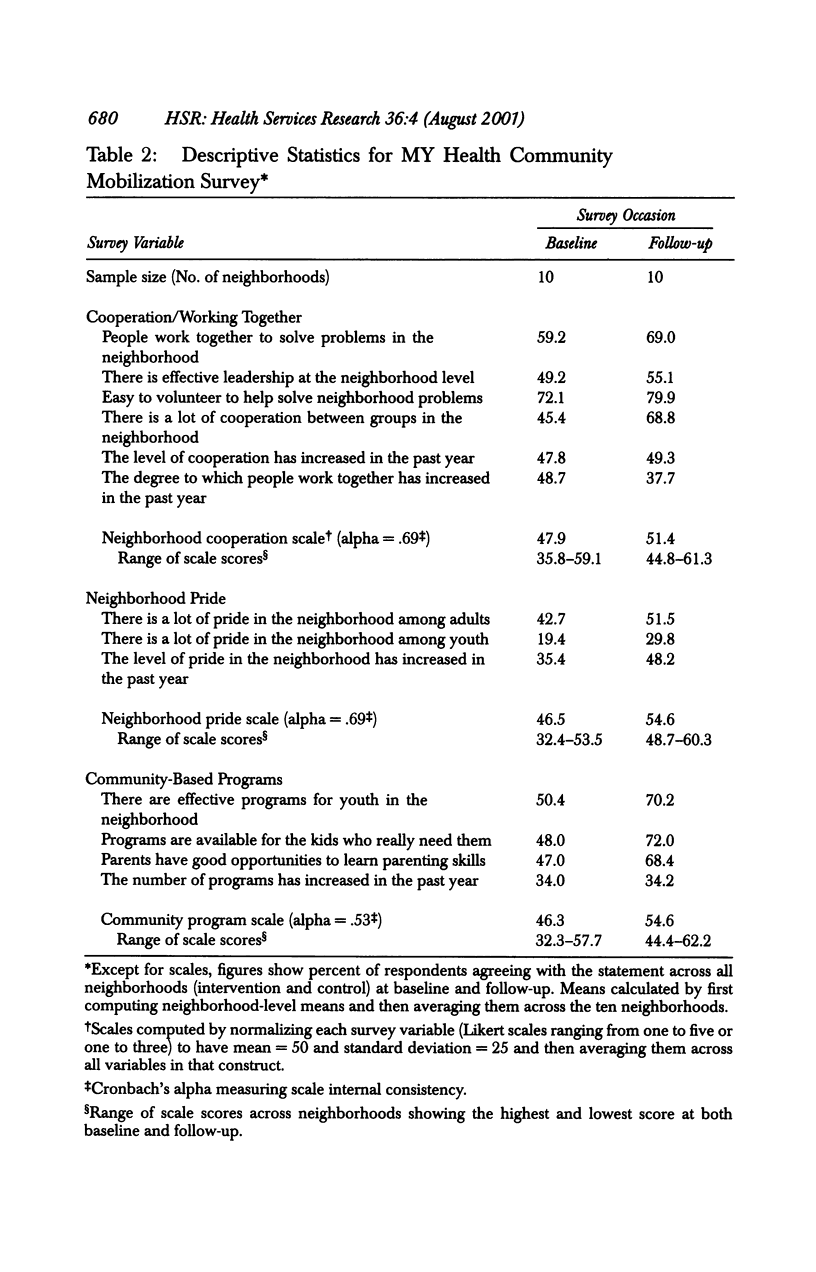
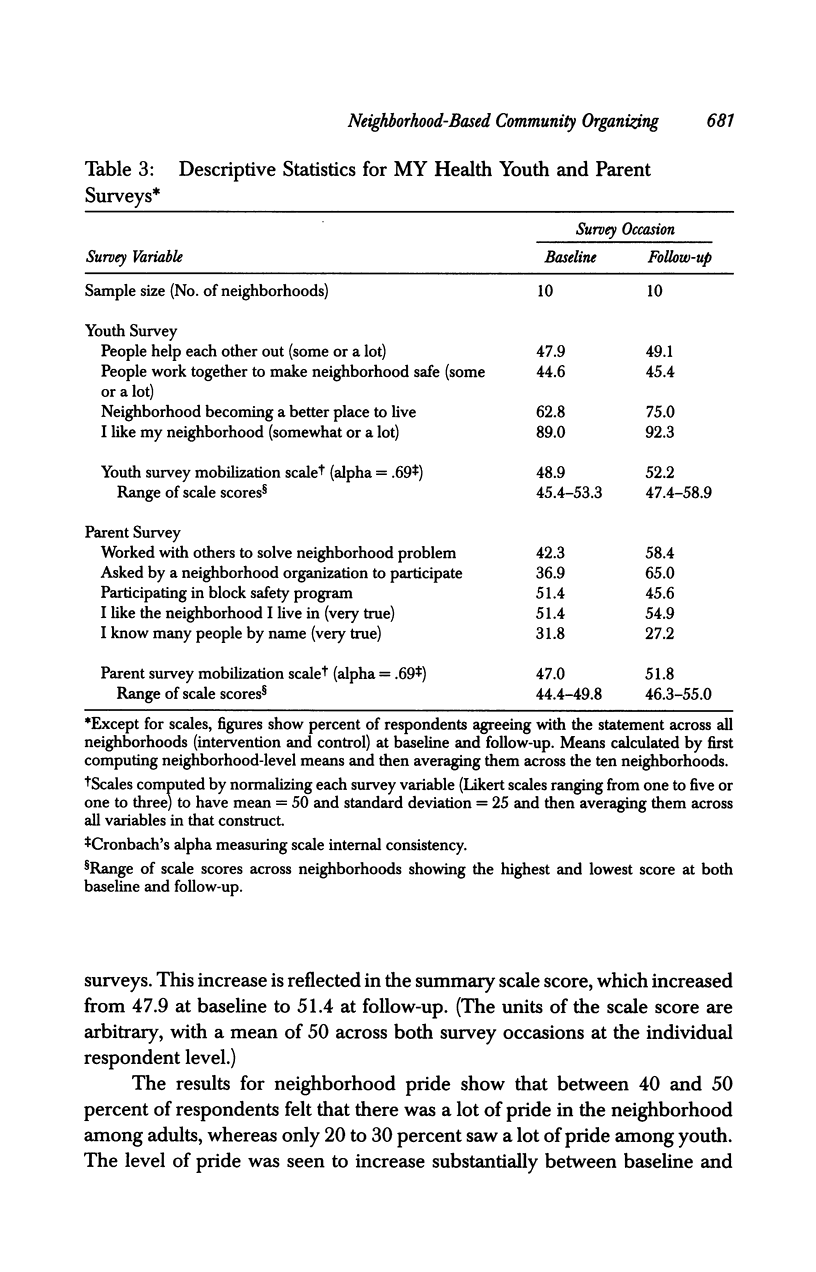
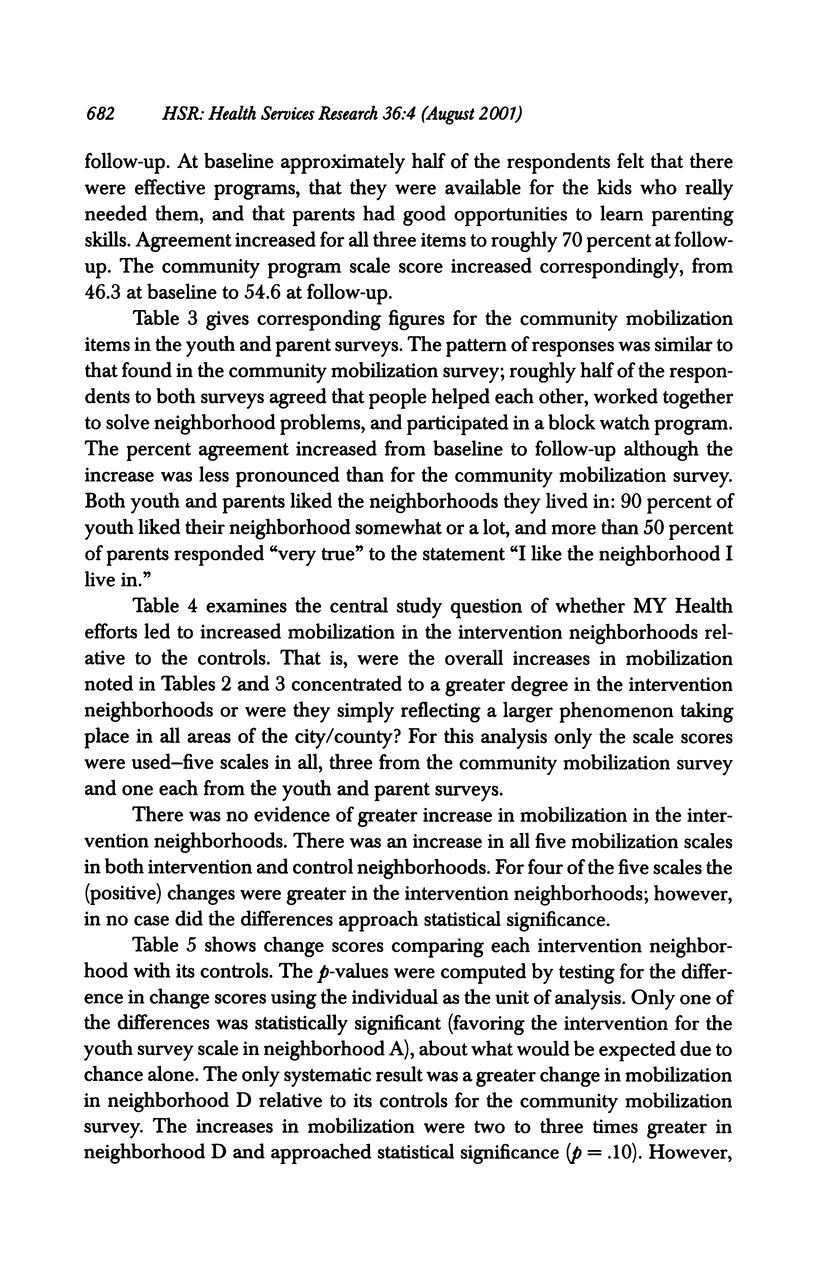
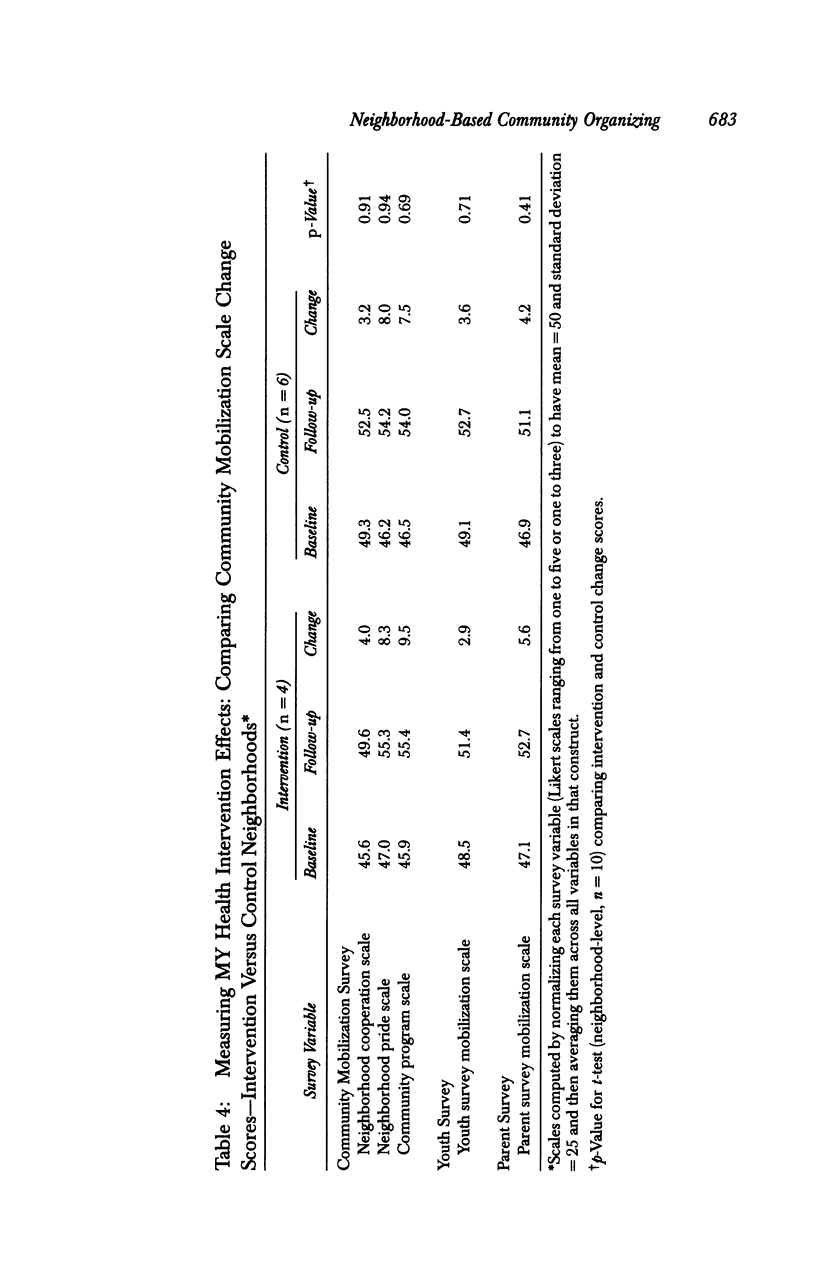


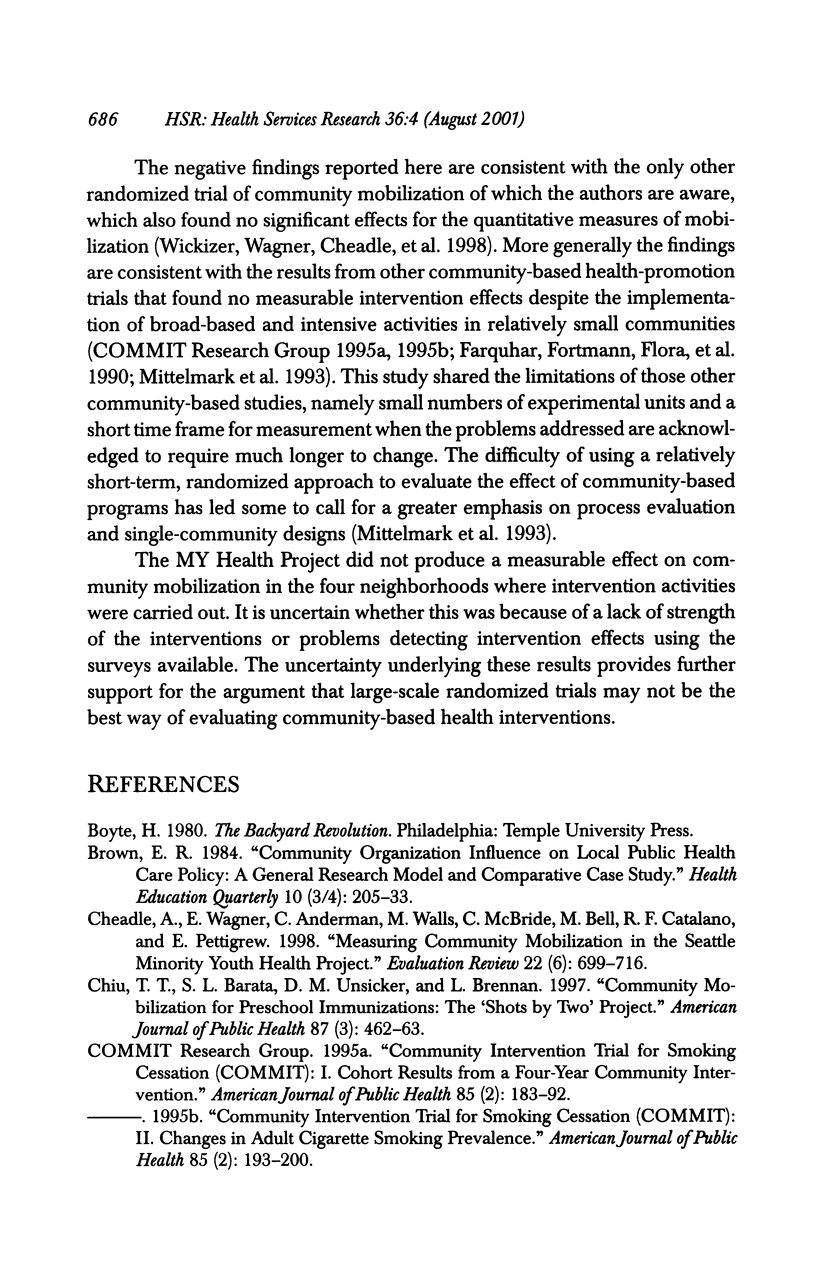
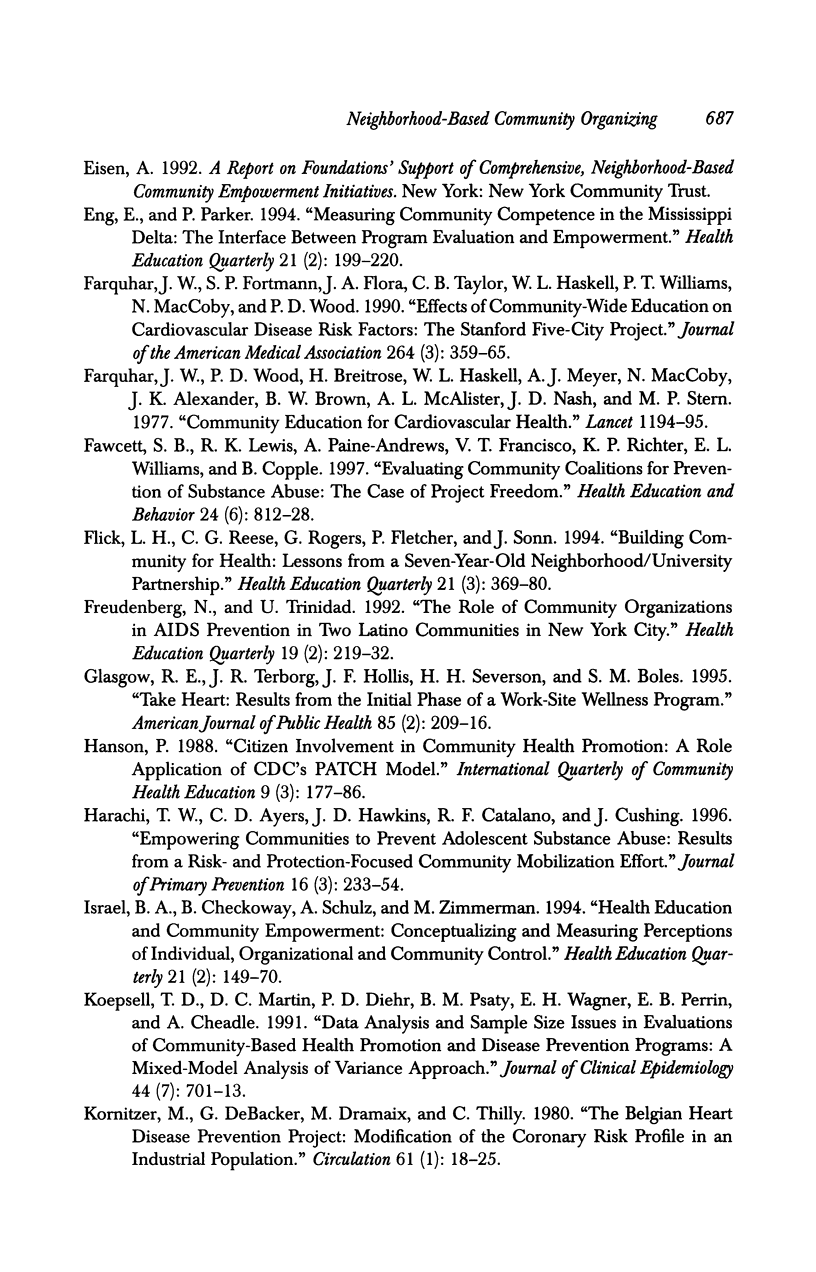
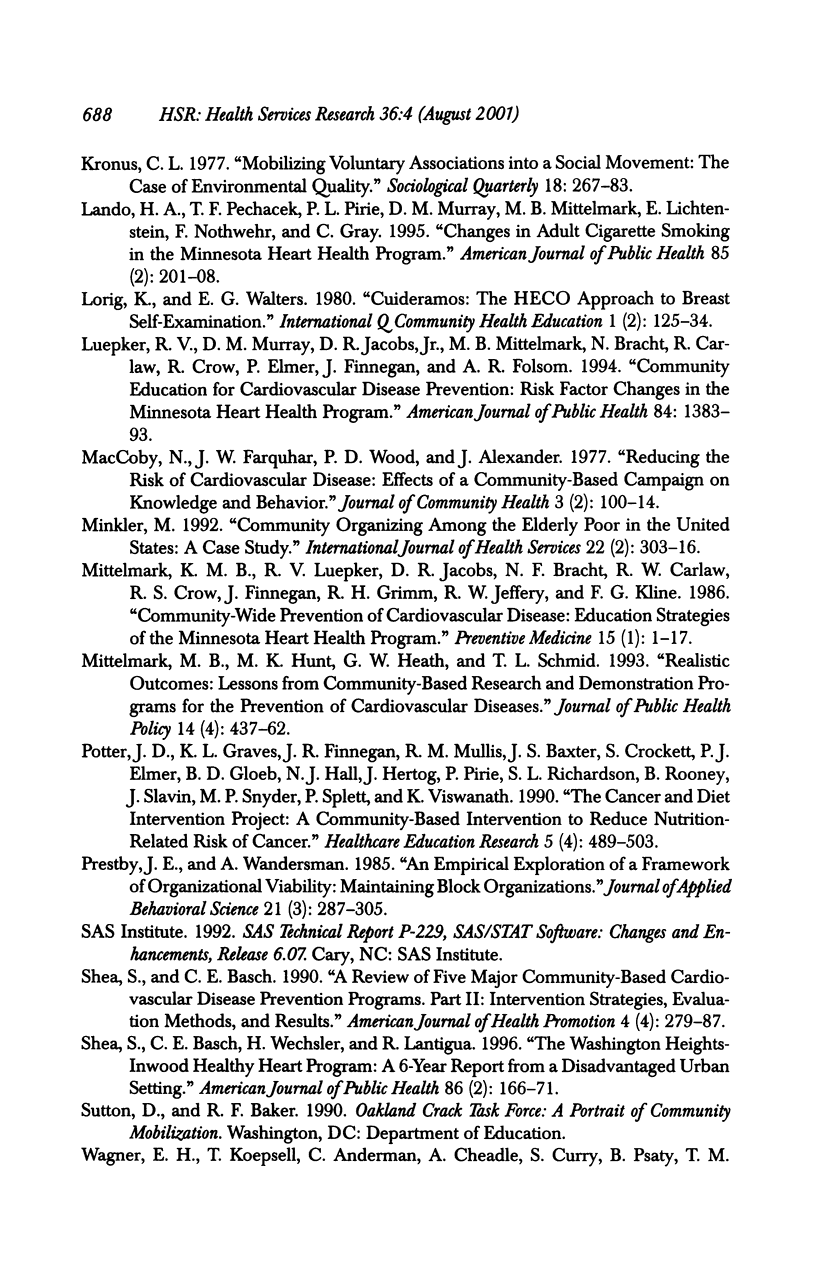
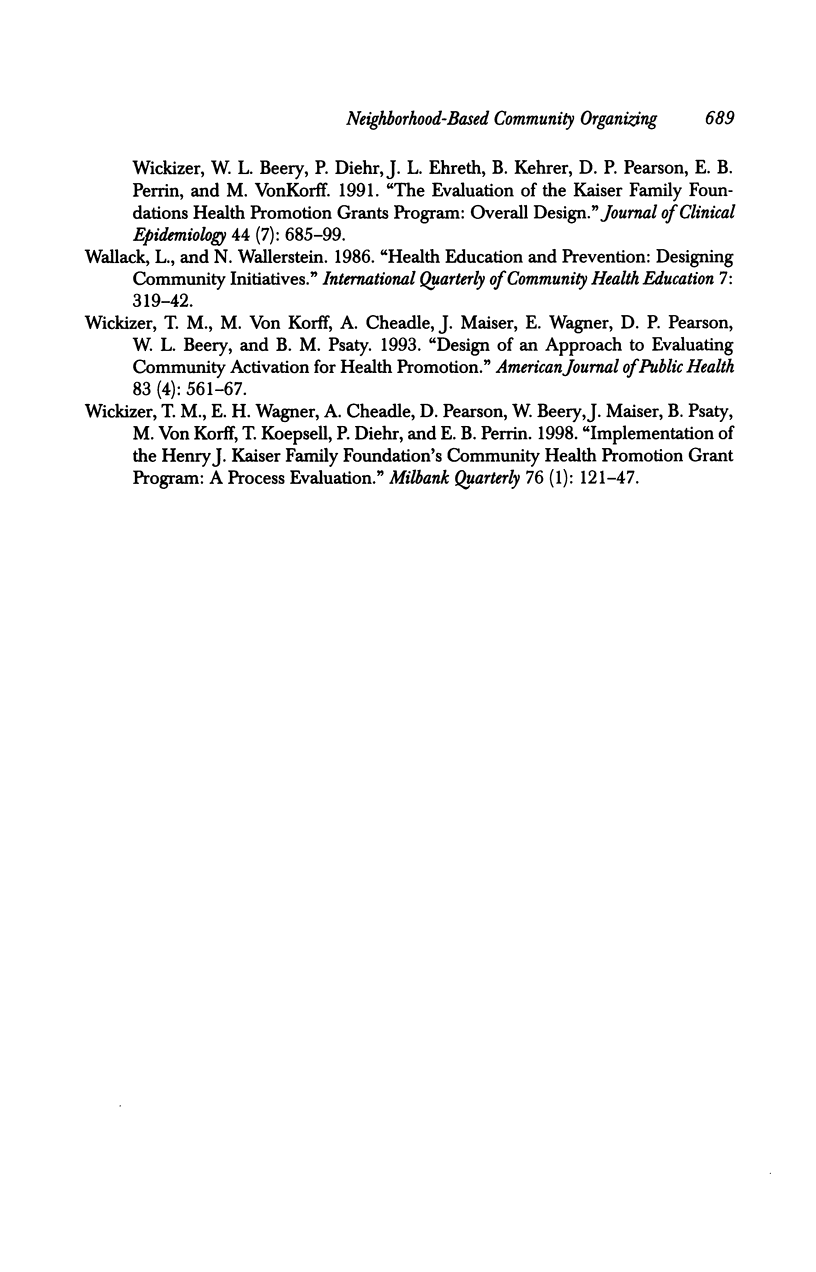
Selected References
These references are in PubMed. This may not be the complete list of references from this article.
- Brown E. R. Community organization influence on local public health care policy: a general research model and comparative case study. Health Educ Q. 1983 Fall-Winter;10(3-4):205–233. doi: 10.1177/109019818301000305. [DOI] [PubMed] [Google Scholar]
- Cheadle A., Wagner E., Anderman C., Walls M., McBride C., Bell M. A., Catalano R. F., Pettigrew E. Measuring community mobilization in the Seattle Minority Youth Health Project. Eval Rev. 1998 Dec;22(6):699–716. doi: 10.1177/0193841X9802200601. [DOI] [PubMed] [Google Scholar]
- Chiu T. T., Barata S. L., Unsicker D. M., Brennan L. Community mobilization for preschool immunizations: the "Shots by Two" Project. Am J Public Health. 1997 Mar;87(3):462–463. [PubMed] [Google Scholar]
- Eng E., Parker E. Measuring community competence in the Mississippi Delta: the interface between program evaluation and empowerment. Health Educ Q. 1994 Summer;21(2):199–220. doi: 10.1177/109019819402100206. [DOI] [PubMed] [Google Scholar]
- Farquhar J. W., Fortmann S. P., Flora J. A., Taylor C. B., Haskell W. L., Williams P. T., Maccoby N., Wood P. D. Effects of communitywide education on cardiovascular disease risk factors. The Stanford Five-City Project. JAMA. 1990 Jul 18;264(3):359–365. [PubMed] [Google Scholar]
- Fawcett S. B., Lewis R. K., Paine-Andrews A., Francisco V. T., Richter K. P., Williams E. L., Copple B. Evaluating community coalitions for prevention of substance abuse: the case of Project Freedom. Health Educ Behav. 1997 Dec;24(6):812–828. doi: 10.1177/109019819702400614. [DOI] [PubMed] [Google Scholar]
- Flick L. H., Reese C. G., Rogers G., Fletcher P., Sonn J. Building community for health: lessons from a seven-year-old neighborhood/university partnership. Health Educ Q. 1994 Fall;21(3):369–380. doi: 10.1177/109019819402100308. [DOI] [PubMed] [Google Scholar]
- Freudenberg N., Trinidad U. The role of community organizations in AIDS prevention in two Latino communities in New York City. Health Educ Q. 1992 Summer;19(2):219–232. doi: 10.1177/109019819201900206. [DOI] [PubMed] [Google Scholar]
- Glasgow R. E., Terborg J. R., Hollis J. F., Severson H. H., Boles S. M. Take heart: results from the initial phase of a work-site wellness program. Am J Public Health. 1995 Feb;85(2):209–216. doi: 10.2105/ajph.85.2.209. [DOI] [PMC free article] [PubMed] [Google Scholar]
- Israel B. A., Checkoway B., Schulz A., Zimmerman M. Health education and community empowerment: conceptualizing and measuring perceptions of individual, organizational, and community control. Health Educ Q. 1994 Summer;21(2):149–170. doi: 10.1177/109019819402100203. [DOI] [PubMed] [Google Scholar]
- Koepsell T. D., Martin D. C., Diehr P. H., Psaty B. M., Wagner E. H., Perrin E. B., Cheadle A. Data analysis and sample size issues in evaluations of community-based health promotion and disease prevention programs: a mixed-model analysis of variance approach. J Clin Epidemiol. 1991;44(7):701–713. doi: 10.1016/0895-4356(91)90030-d. [DOI] [PubMed] [Google Scholar]
- Kornitzer M., De Backer G., Dramaix M., Thilly C. The Belgian heart disease prevention project. Modification of the coronary risk profile in an industrial population. Circulation. 1980 Jan;61(1):18–25. doi: 10.1161/01.cir.61.1.18. [DOI] [PubMed] [Google Scholar]
- Lando H. A., Pechacek T. F., Pirie P. L., Murray D. M., Mittelmark M. B., Lichtenstein E., Nothwehr F., Gray C. Changes in adult cigarette smoking in the Minnesota Heart Health Program. Am J Public Health. 1995 Feb;85(2):201–208. [PMC free article] [PubMed] [Google Scholar]
- Luepker R. V., Murray D. M., Jacobs D. R., Jr, Mittelmark M. B., Bracht N., Carlaw R., Crow R., Elmer P., Finnegan J., Folsom A. R. Community education for cardiovascular disease prevention: risk factor changes in the Minnesota Heart Health Program. Am J Public Health. 1994 Sep;84(9):1383–1393. doi: 10.2105/ajph.84.9.1383. [DOI] [PMC free article] [PubMed] [Google Scholar]
- Maccoby N., Farquhar J. W., Wood P. D., Alexander J. Reducing the risk of cardiovascular disease: effects of a community-based campaign on knowledge and behavior. J Community Health. 1977 Winter;3(2):100–114. doi: 10.1007/BF01674232. [DOI] [PubMed] [Google Scholar]
- Minkler M. Community organizing among the elderly poor in the United States: a case study. Int J Health Serv. 1992;22(2):303–316. doi: 10.2190/6KFL-N1WY-NPDG-RXP5. [DOI] [PubMed] [Google Scholar]
- Mittelmark M. B., Hunt M. K., Heath G. W., Schmid T. L. Realistic outcomes: lessons from community-based research and demonstration programs for the prevention of cardiovascular diseases. J Public Health Policy. 1993 Winter;14(4):437–462. [PubMed] [Google Scholar]
- Mittelmark M. B., Luepker R. V., Jacobs D. R., Bracht N. F., Carlaw R. W., Crow R. S., Finnegan J., Grimm R. H., Jeffery R. W., Kline F. G. Community-wide prevention of cardiovascular disease: education strategies of the Minnesota Heart Health Program. Prev Med. 1986 Jan;15(1):1–17. doi: 10.1016/0091-7435(86)90031-9. [DOI] [PubMed] [Google Scholar]
- Shea S., Basch C. E. A review of five major community-based cardiovascular disease prevention programs. Part II: Intervention strategies, evaluation methods, and results. Am J Health Promot. 1990 Mar-Apr;4(4):279–287. doi: 10.4278/0890-1171-4.4.279. [DOI] [PubMed] [Google Scholar]
- Shea S., Basch C. E., Wechsler H., Lantigua R. The Washington Heights-Inwood Healthy Heart Program: a 6-year report from a disadvantaged urban setting. Am J Public Health. 1996 Feb;86(2):166–171. doi: 10.2105/ajph.86.2.166. [DOI] [PMC free article] [PubMed] [Google Scholar]
- Wickizer T. M., Von Korff M., Cheadle A., Maeser J., Wagner E. H., Pearson D., Beery W., Psaty B. M. Activating communities for health promotion: a process evaluation method. Am J Public Health. 1993 Apr;83(4):561–567. doi: 10.2105/ajph.83.4.561. [DOI] [PMC free article] [PubMed] [Google Scholar]
- Wickizer T. M., Wagner E., Cheadle A., Pearson D., Beery W., Maeser J., Psaty B., VonKorff M., Koepsell T., Diehr P. Implementation of the Henry J. Kaiser Family Foundation's Community Health Promotion Grant Program: a process evaluation. Milbank Q. 1998;76(1):121–147. doi: 10.1111/1468-0009.00081. [DOI] [PMC free article] [PubMed] [Google Scholar]


